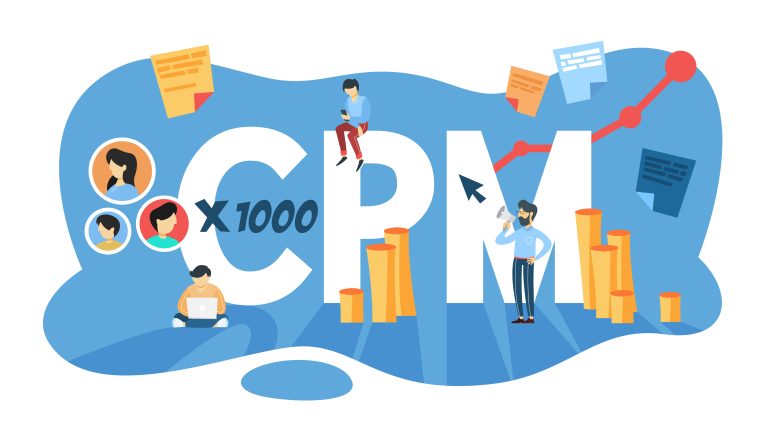Cost per mille stands for cost per thousands of impressions. Meaning, it’s the amount that advertisers pay to display 1 000 ad impressions or the average amount marketers pay every thousand times that internet browser delivers your ad. Therefore, CPM is a pricing model in programmatic advertising. To help you better understand the CPM essence and role in marketing,
Alpha Efficiency has made this article, hopefully making this subject more understandable and clear.
Besides a CPM, there are many other digital advertising measuring metrics that determine the pricing method. Different pricing methods are appropriate for different advertising campaigns. The pricing method can be based on the frequency of ad appearance, number of clicks, leads to a sale, and other aspects. Pricing can be tailored to the specific intended function of a particular ad campaign.
The CPM approach is focused on exposure, contrary to, for example, the cost-per-click method that is based on the number of clicks. While CPM measures the number of times an ad was displayed on a website, it doesn’t measure clicks on an ad.
What is CPM?
The role of CPM in marketing?
Digital marketing considers numerous elements. The most significant benefit of CPM is its ability to raise brand awareness and recognition. Launching CPM helps reach a wide population after which a company can run more targeted ad campaigns addressed to subsets. As the CPM is brand-oriented, it is a great strategy to proceed with a campaign that is more conversion-oriented.
CPM is also considered a top-of-the-funnel strategy as it focuses on capturing a wide audience. However, this strategy only supports the top of the funnel while carrying on the entire funnel needs additional strategies.
When it comes to ad publishers, they favor the CPM method as it provides them with a profit for just displaying the ads. However, for publishers to gain a significant amount, the website traffic has to be robust.
The average CPM rates are usually low and depend on each platform and website individually. For instance, social media platforms often have higher CPM rates but these too vary from one to another. Facebook and Instagram have a CPM rate of 9$ while LinkedIn and Twitter are around 6,5$.
How to measure CPM?
To figure CPM there is a simple formula that encompasses the basic data of the CPM campaign:
- Total campaigns costs
- Number of impressions that the CPM campaign received
To calculate CPM, divide the total campaign costs by the number of impressions and multiply it by 1 000. You will generate the CPM figure which is known as a CPM rate.
Final Thoughts
The issue that advertisers find in the CPM method is the ability to measure the impressions, and therefore the concerns about whether they are fairly charged. The problem of impressions refers to duplicate visitors, internet bots, and incomplete loads. However, the CPM strategy is still a proven way to boost your brand and product awareness, sales conversion, and marketing efficiency.





